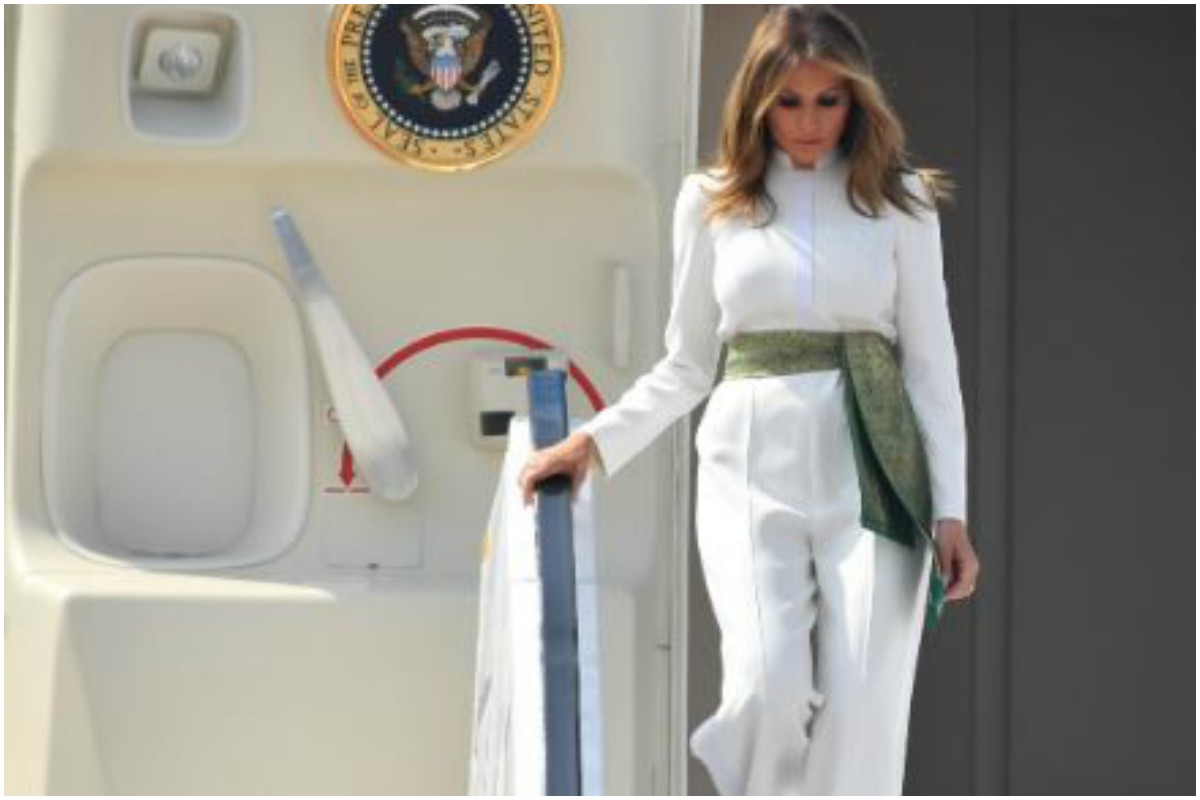Union Cabinet approves India-UAE pact on economic corridor
The aim of the IGFA is to enhance the bilateral relations and to further strengthen the relations between the two countries in the ports, maritime and logistics sectors.
“The role of First Lady is whatever the First Lady wants it to be,” Laura Bush believed, although most of the first ladies carefully tried to balance being perceived as a “queen” of the people while also being a “commoner” who understood their problems and lives.

(Twitter/@PIB_India)
During his visit to India in February, when President Trump was busy in his meeting with Prime Minister Modi, first lady Melania Trump attended a “happiness class” at a government-run school in Delhi. In fact, the first lady of the United States (FLOTUS) performs possibly “the hardest unpaid job in the world”, as Pat Nixon, the wife of former president Richard Nixon, once said. The role of the FLOTUS is considered an “office of honour”, and she is always in public attention and under the media scanner.
Baring a few exceptions, when some relative of the President bore the responsibility, the term ‘First Lady’ applies to the wife of the president. However, what’s her role? “The role of First Lady is whatever the First Lady wants it to be,” Laura Bush believed, although most of the first ladies carefully tried to balance being perceived as a “queen” of the people while also being a “commoner” who understood their problems and lives.
Despite being daughter-in-law of a former president, Laura Bush got amazed by the sheer number of designer clothes that she was expected to purchase to meet the fashion expectations for a first lady. “After our first year in the White House, our accountant said to George (W Bush), ‘It costs a lot to be president,’ and he was referring mainly to my clothes,” she wrote in her memoir. However, this Thanksgiving, Joe and Jill Biden, the President-elect and the future FLOTUS, penned a joint opinion piece for CNN. “This year, our turkey will be smaller and the clatter of cooking a little quieter,” they wrote. And immediately it became apparent that Jill Biden might re-shape the image the FLOTUS.
Advertisement
Martha Washington, the first ‘first lady’, played hostess for social events, and thus an unwritten template for subsequent first ladies was framed. From her eye-catching fashion to her penchant for politics in the early 1800s, Dolley Madison possibly set the stage for future first ladies.
Mary Todd Lincoln’s stylish wardrobe became a topic of gossip. However, the role of the FLOTUS might have been reformulated ever since Eleanor Roosevelt undertook duties beyond just being a hostess, possibly transforming the role of first lady to the high profile one it is today. Mrs. Roosevelt worked on social reform projects, she was the first to hold press conferences, and even the first wife of a presidential candidate to speak at a national convention. However, Eleanor Roosevelt’s unprecedented active political role in FRD’s presidency, becoming his surrogate in many ways, may be better explained by the physical constraints FDR faced from polio’s aftereffects.
While Eleanor Roosevelt was dedicated to African-American civil rights, Jacqueline Kennedy focused on historical preservation of architectural treasures, and Lady Bird Johnson paid attention to the environment; subsequently the focus of the FLOTUS might have been shifted mostly towards women’s and children’s issues during Nixon’s presidency. This was followed by Betty Ford’s positions favoring women’s rights, Rosalyn Carter’s campaign for effective treatment for mental illness, Nancy Reagan’s “Just Say No” drug awareness campaign, Hillary Clinton’s focus on health initiatives and women’s equality, Laura Bush’s efforts on education-related issues, Michelle Obama’s works on issues such as childhood obesity, girls’ education, and military families, and Melania Trump’s drive on well-being, social media usage, and opioid abuse among children. However, while Bess Truman, Mamie Eisenhower, Jacqueline Kennedy, Lady Bird Johnson and Pat Nixon may be better described as “supportive spouses/model wives” in the post-World War II era, the role played by subsequent first ladies was no different – they just went through adaptation and blended their style of functioning with the changing social problems of modern life while supplementing their husbands.
What can then be regarded a paradigm shift in the role of the first spouse? Well, in her speech at Wellesley College in 1990, Barbara Bush remarked that one day a member of the audience might walk in her footsteps as the president’s spouse. “And I wish him well,” said Mrs. Bush. Still, no woman could assume the top post and America couldn’t get its first ‘first gentleman’ yet. Even Hillary Clinton waited for her husband’s tumultuous second term to end before triggering her own political career. However, there are signs that the country is eager to change.
Come January 20, Kamala Harris will become the first woman vice president, and, who knows, America might get its first woman president within the next few presidential elections as well. A social revolution of this magnitude, however, is the collective effect of many issues. When Dr. Jill Biden, the Second Lady during Obama’s presidency, held her job outside of the political sphere as a professor at Northern Virginia Community College, Gallup polls indicated that most Amer icans would not object to a president’s spouse holding a second career. So, there is no doubt that for some time now America has been ready for a FLOTUS having a personal professional career. They just needed someone to come forward and to break the barrier. Michelle Obama or Melania Trump didn’t go that far. Thus, when Jill Biden, being the first lady of the United States, would teach in her classes, that would have no less impact than the likes of Kamala Harris towards revolutionizing society.
The writer is Professor of Statistics, Indian Statistical Institute, Kolkata.
Advertisement